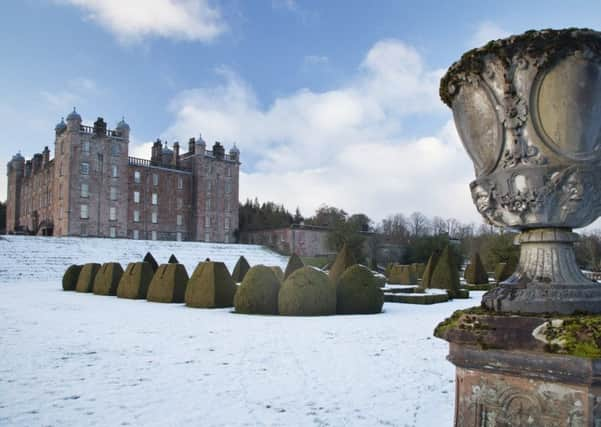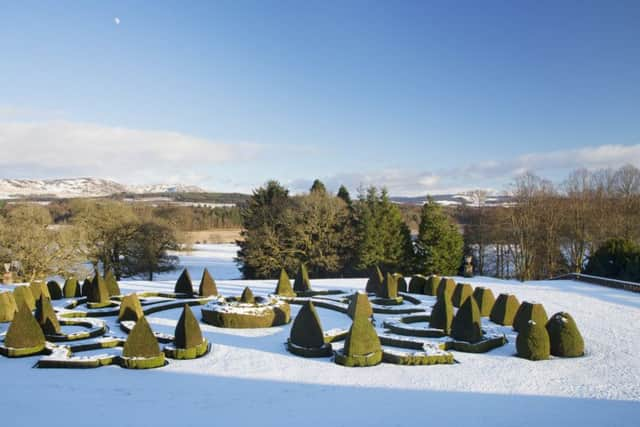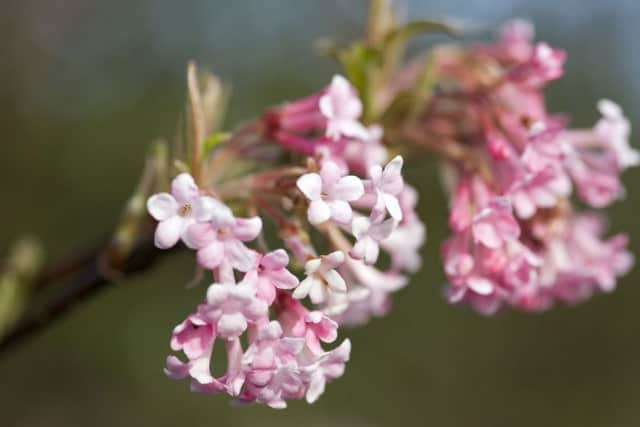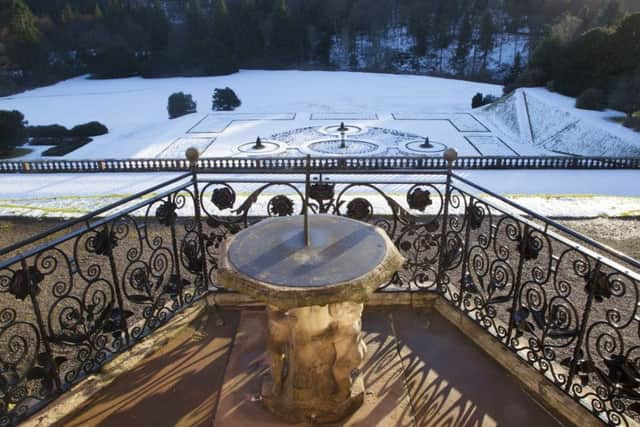Drumlanrig Castle’s intriguing history


THE first thing that’s noticeable about Drumlanrig Castle is its sheer beauty and the magnificence of its hilly Dumfriesshire setting. The 17th century sandstone castle, home to the dukes of Buccleuch and Queensberry for three centuries, is at the end of a drive that runs through parkland studded with mature trees. Its formal sandstone facade is softened with a series of rounded domes, which create an informal feeling perfectly suited to this rural location in the Nith Valley. Close inspection reveals the rich detail of spectacular carvings along the facade.
The garden at Drumlanrig boasts an intriguing history. Praised for its layout by the author Daniel Defoe in 1720, the garden was once reputed to have included a series of Renaissance hanging gardens inspired by plant-hunting expeditions to America and Barbados. Neglected by the 4th Duke of Queensberry, “Old Q”, who left his inheritance in a state of disrepair in 1810, the garden was later restored in a generous Victorian style that featured a series of glasshouses where exotic fruit trees and bedding plants were raised.
Advertisement
Hide AdAdvertisement
Hide AdThe second thing that’s noticeable is the speed at which head gardener Robbie Black walks. We march up through the courtyard west of the castle and into the first part of the formal garden, the private space created by Jane, Duchess of Buccleuch, in the 1970s and planted with the white and blue flowers of Hydrangea paniculata. Then it’s onto the terrace overlooking the west parterre, a formal plot planted with roses and catmint, punctuated with yew columns topped with domes that echo the ones on the castle roof.


Robbie, who has been at Drumlanrig for 25 years, strides along the terrace from where there is a spectacular view over the south parterre. Formerly the shawl parterre, in winter it is best viewed from the sundial terrace, where the wrought iron balustrade of roses and thistles encloses a 17th century bronze sundial. From this vantage point in summer you can see the patterns mown in the lawns beyond.
Here, earlier plantings of heathers have been replaced with a contemporary scheme of perennials including deep red sedum, Alchemilla mollis, Prince of Wales feathers, grey lambs lugs Stachys byzantina and astilbe. All are cut back in the winter to allow the box outline of the design to stand out clearly.
Below is the long terrace backed with a herbaceous border, home to two tender varieties, Xanthoceras sorbifolium and rare Northern China Carpenteria californica, while beyond a line of alternating green and copper fastigate beech, Fagus sylvatica ‘Dawyk’, stands Britain’s tallest weeping beech.
Next we reach the east terrace, home to the parterre of tall topiary yew, conifer and box, so elegant when covered in snow, which was designed by Jane in 1978. Robbie says: “The scheme is a simplified design of an original engraving found in the castle.”


The terrace was dug up to grow potatoes during the Second World War and later grassed over and thus presented the perfect opportunity for restoration.
Steep diagonal paths cut into the grass bank lead down to the lower level of the garden and on towards the woodland. At this point it becomes clear why Robbie is walking so fast: the extent and variety of these historic gardens plus their recent additions is breathtaking. Indeed Robbie confirms that four full-time gardeners are employed here, down from 26 a century ago: maintaining the 20 acres of lawns that surround the castle and the manicured grass covering the terraced steps that lead to the castle is a task in which all the members of the gardening staff are involved.
The woodland, where Robbie heads next, is an equally important part of the garden and is full of surprises such as the Red oak planted by the astronaut Neil Armstrong, a pet cemetery, a Douglas fir raised from seed sent by David Douglas in 1829, and a heather-roofed pavilion lined with an intricate moss and heather ceiling, coppiced hazel seating and a larch floor dating from 1850. Further round, a hazel house this year celebrates its centenary. Though its roof has recently been slated to cut down on maintenance, it remains elegant.
Advertisement
Hide AdAdvertisement
Hide AdRecent introductions by Richard, Duke of Buccleuch, include sculpture by local artist Andy Goldsworthy. The conical sandstone Penpont Cairn, sited a mile from the castle, was built to celebrate the Millennium, while Goldsworthy’s Striding Arch set over the Marr Burn in the woodlands below the castle adds a quirky dimension.


The woodlands, Robbie says, were to a large extent overgrown 18 years ago and have been gradually restored and paths uncovered, thanks to the guidance of Victorian maps. The undergrowth has been cleared of Rhododendron ponticum and overgrown trees planted too close together have been removed. New plantings include species rhododendron, such as Rh falconerii and white and pink flowering Rh loderii which are complemented by fragrant azalea. Newly planted trees include 30 different varieties of acer – including Acer griseum with its peeling orange bark.
Inspiration for creating the winter garden came about with the loss of some exceptionally large beech trees which had come to the end of their life and were becoming dangerous. After clearing the site and reinstating the Victorian footpaths, planting began using the Heather House as a focal point. With help from local school children as part of the community charity project the Queensberry Initiative, the main backbone of the garden was laid out and underplanted with thousands of snowdrops to contrast with the bright stems of the remainder of the planting. Here, this includes white stemmed corns Rubus cockburnianus, fragrant Vibrunum x botnantense, Acer capillipes, white barked Betula utilis jaquemontii, Prunus serrula with its peeling bark, yellow stemmed Cornus stolonifera flaviremea, red stemmed Cornus alba elegantissima and different winter flowering hamamellis and mahonia. Adding to the diversity is the recently restored rock garden, tucked into a clearing. This site, Robbie says, is a real sun trap and with the drainage afforded by its sandy soil, the perfect place for alpine plants.
A spring garden is found at the formal entrance to the woodland, close to the children’s play area and picnic site. A hallmark of all Buccleuch estates, this spot is designed to entice visitors into the woodland garden with its lush welcoming tapestry of snowdrops, aconites and daffodils followed by meconopis and other spring bulbs. This informal space, close to the plant nursery, is the perfect introduction to a garden the Duke describes, in his introduction to Drumlanrig, The Castle, Its People And Its Paintings, as “stirring powerful feelings of contentment,” for him and his family. It is easy to understand what he means.
• Drumlanrig Castle, Thornhill, Dumfriesshire DG3 4AQ. Tel: 01848 331 555, www.drumlanrig.com, [email protected]